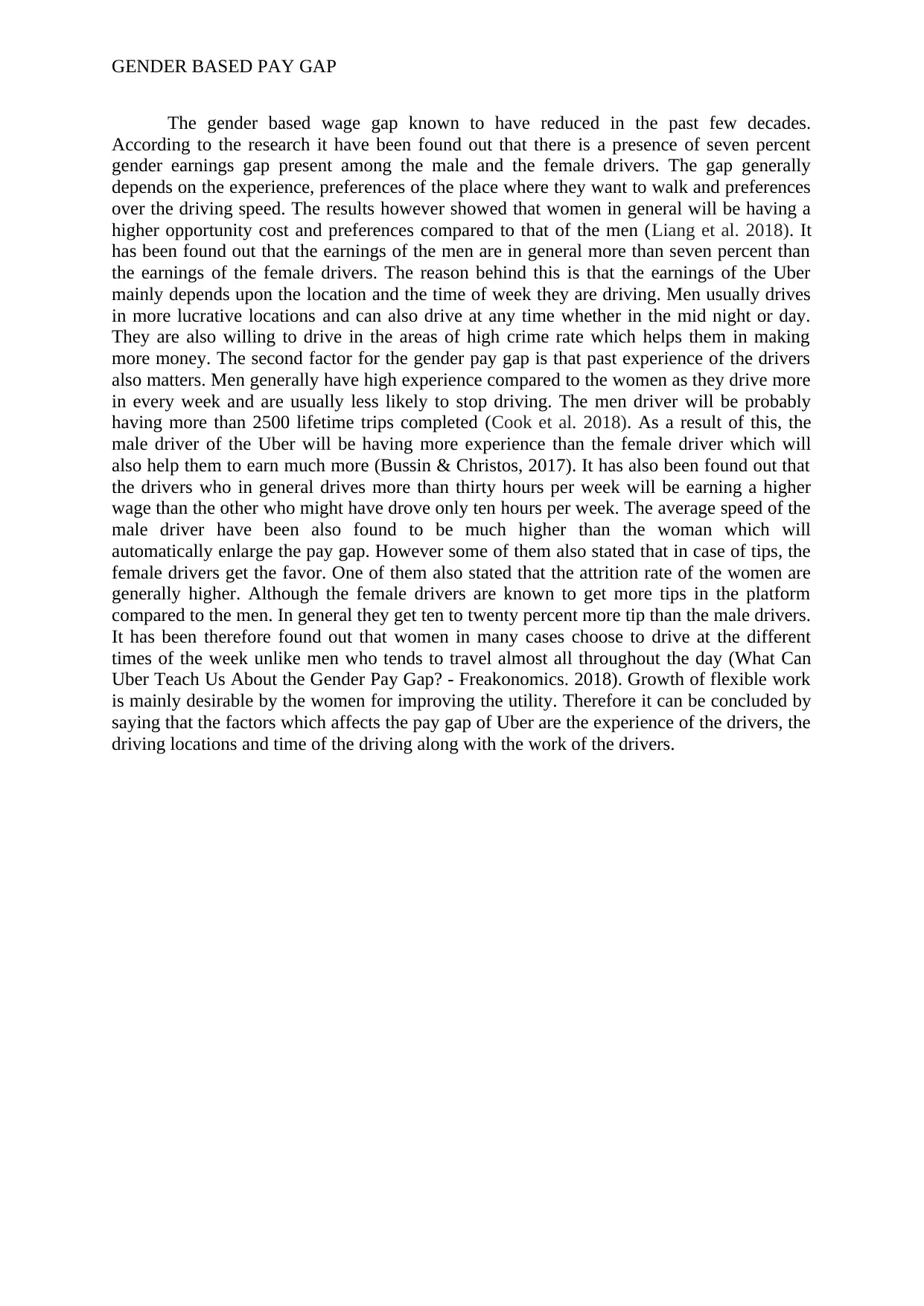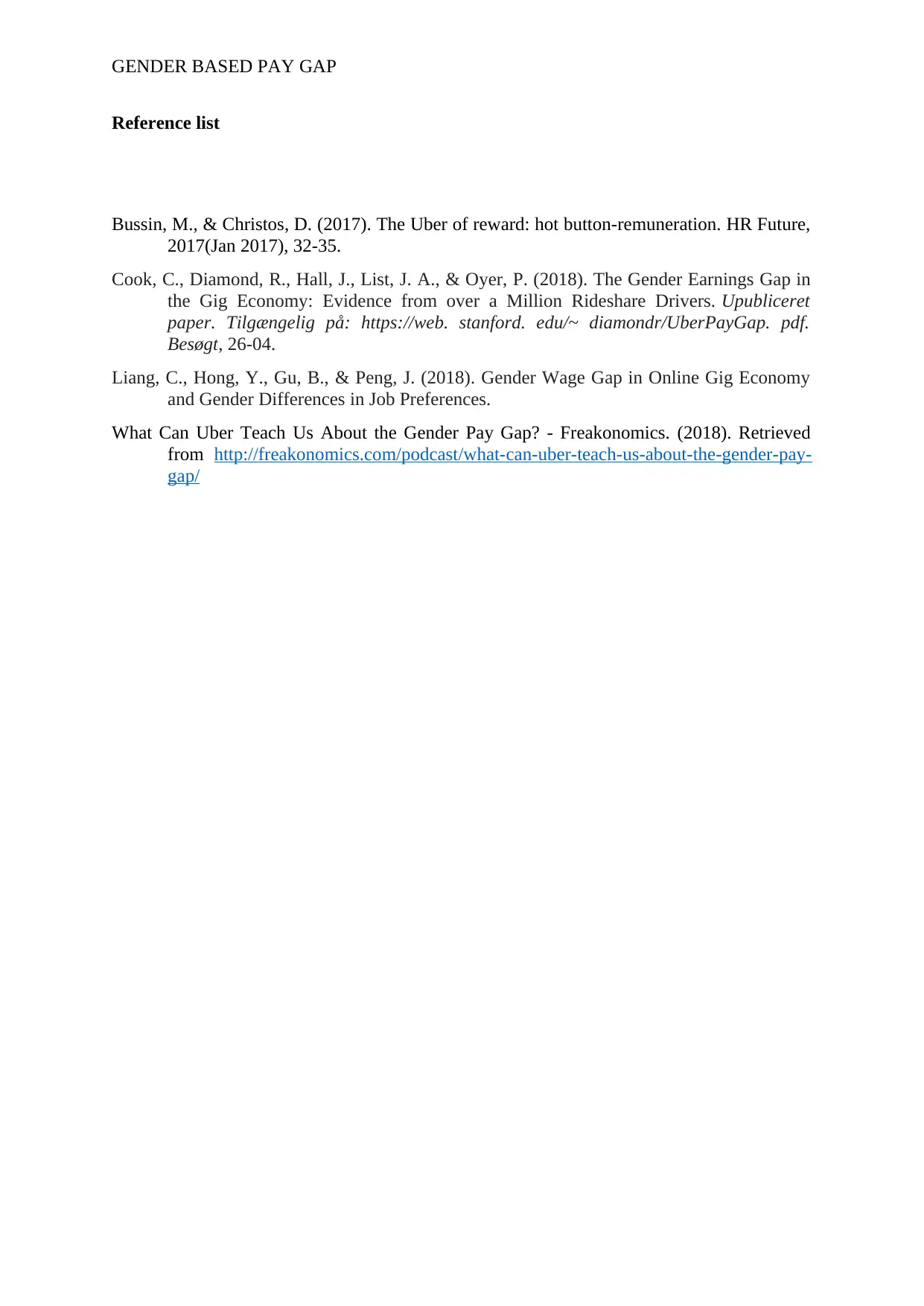Gender Pay Gap Analysis: An Uber Case Study - ECON 1001A, Fall 2018
VerifiedAdded on 2023/05/30
|3
|716
|177
Essay
AI Summary
This essay reviews the Freakonomics podcast on what Uber can teach us about the gender pay gap. It summarizes the research question, methodology, and key findings, including the observation that a gender earnings gap exists among Uber drivers. The gap is attributed to factors such as experience, preferred driving locations and times, and driving speed. Men tend to drive more often, in more lucrative locations, and at higher speeds, leading to higher earnings. While women receive more tips, their overall earnings are lower due to these other factors. The essay concludes by noting that flexible work options are particularly desirable for women, and that the gender pay gap in the gig economy is influenced by a combination of driver experience, location and timing of work, and work habits. Desklib provides a platform for students to access this and other solved assignments for academic assistance.
1 out of 3










![[object Object]](/_next/static/media/star-bottom.7253800d.svg)